Manual de uso Panasonic NN-Q553 Microondas
¿Necesita un manual para su Panasonic NN-Q553 Microondas? A continuación puedes ver y descargar el manual en PDF gratis en español. Este producto actualmente tiene 7 preguntas frecuentes, 0 comentarios y tiene 0 votos. Si este no es el manual que desea, , contáctenos.
¿Su producto tiene algún defecto y el manual no ofrece ninguna solución? Vaya a Repair Café para solicitar un servicio de reparación gratuito.
Manual de uso
Loading…

Loading…
Puntuación
Dé su opinión de la Panasonic NN-Q553 Microondas calificando el producto. ¿Quiere compartir su experiencia con este producto o hacer una pregunta? Deje un comentario en la parte inferior de la página.Más sobre este manual
Entendemos que es bueno tener un manual en papel para tus Panasonic NN-Q553 Microondas. Siempre puedes descargar el manual desde nuestro sitio web e imprimirlo tú mismo. Si deseas tener un manual original te recomendamos contactar con Panasonic. Es posible que puedan proporcionar un manual original. ¿Estás buscando el manual de tu Panasonic NN-Q553 Microondas en otro idioma? Elija su idioma preferido en nuestra página de inicio y busque el número de modelo para ver si lo tenemos disponible.
Especificaciones
| Marca | Panasonic |
| Modelo | NN-Q553 |
| Categoría | Microondas |
| Tipo de archivo | |
| Tamaño del archivo | 2.17 MB |
Todos los manuales para Panasonic Microondas
Más manuales de Microondas
Preguntas frecuentes sobre Panasonic NN-Q553 Microondas
Nuestro equipo de atención al cliente busca información útil sobre los productos y responde a las preguntas frecuentes. Si encuentra inexactitudes en las preguntas frecuentes, indíquenoslo usando nuestro formulario de contacto.
Mi microondas no arranca cuando aprieto el botón de inicio, ¿qué puedo hacer? Verificado
En muchos casos no se ha cerrado la puerta correctamente. Abra y cierre la puerta e inténtelo de nuevo.
Ha sido de gran ayuda (3118) Leer más¿Puedo usar el microondas cuando el plato giratorio no funciona? Verificado
El plato giratorio asegura que el calor se distribuya de manera uniforme. Cuando no funciona, el microondas no se puede usar correctamente. Repárelo.
Ha sido de gran ayuda (1912) Leer másEl microondas está encendido pero no funciona. ¿Porqué es eso? Verificado
Es posible que la puerta no cierre correctamente. Para garantizar la seguridad, un microondas no funcionará hasta que la puerta esté completamente cerrada. A veces, esto se puede solucionar ajustando la bisagra de la puerta.
Ha sido de gran ayuda (1295) Leer másLa placa de mica/cartón dentro del microondas se ha desprendido. ¿Podré seguir utilizando el microondas? Verificado
En absoluto. La placa de mica/cartón es la guía de ondas que distribuye las microondas. Vuelva a colocarla o consiga un reemplazo.
Ha sido de gran ayuda (1196) Leer másMi microondas sigue haciendo ruido, incluso después de haber terminado. ¿Es normal? Verificado
Sí, esto es un ruido normal. El ventilador enfría el microondas después de su uso. La duración depende del tiempo de funcionamiento del microondas.
Ha sido de gran ayuda (998) Leer más¿Por qué no puedo poner metal en mi microondas? Verificado
El metal no deja pasar las microondas sino que las rechaza. Cuando estas microondas rebotan en el mismo lugar, puede causar chispas.
Ha sido de gran ayuda (721) Leer más¿Puedo hervir agua en el microondas? Verificado
No absolutamente no. El agua puede sobrecalentarse. Esto significa que el agua puede alcanzar una temperatura superior a 100 ℃ sin hervir. Cuando esta agua toca cualquier objeto, puede hervir y salpicar instantáneamente, provocando quemaduras.
Ha sido de gran ayuda (721) Leer más


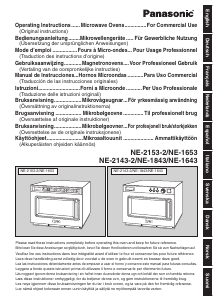
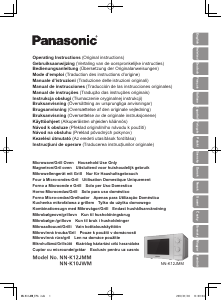
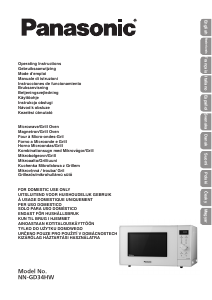
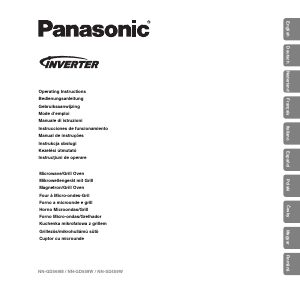
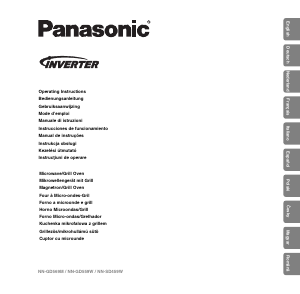
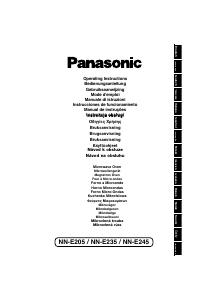
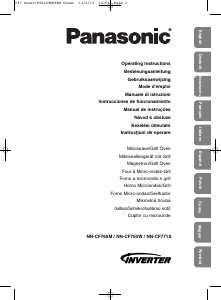
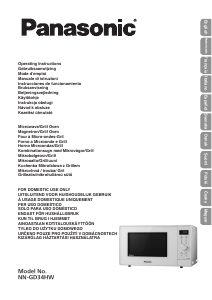
Únase a la conversación sobre este producto
Aquí puedes compartir lo que piensas sobre Panasonic NN-Q553 Microondas. Si tiene alguna pregunta, primero lea atentamente el manual. Puede solicitar un manual utilizando nuestro formulario de contacto.